2014 Sea-Doo RXT 260 Review
The hull and horsepower recipe done right
Hull…and horsepower. Done right, it’s the single-best recipe for success in the performance end of the PWC market. It’s horsepower that deserves the credit for a boat’s speed and acceleration. And it’s the hull that makes sure all that power is transferred as efficiently as possible to the water to produce the best results in the widest variety of water conditions.
Some times, manufacturers come close, but just don’t seem to get the formula quite right. Other times, they almost seem to come close to perfection. Sea-Doo’s RXT 260 is one of the latter.
Engine…
What’s found under the seat of the RXT 260 is no surprise. It’s the very familiar 1,494cc Rotax, featuring both a supercharger and intercooler to produce an abundance of power, both in terms of low-end acceleration and top-end speed. No, it probably doesn’t truly produce 260 horsepower, but what matters is how this boat runs in the water…and against the competition. Expect to easily hit the 65 mph mark in good conditions, and most likely peg the engine’s electronically governed top end of 67 mph with a light fuel and passenger load. As to the 30 mph benchmark, about 1.8 seconds is a good approximation of the time it will take to reach that milestone. In short, the RXT 260 runs like a flagship should, and compares quite well with similar models from the competition. It’s quick out of the hole, it’s powerful through the midrange, and it’s got a wickedly fast top speed.
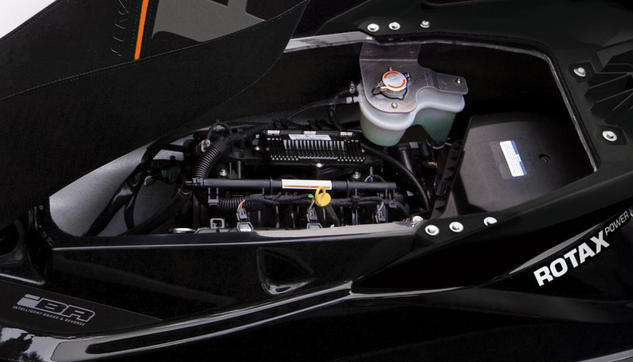 A 1,494cc supercharged and intercooled engine provides gobs of horsepower.
A 1,494cc supercharged and intercooled engine provides gobs of horsepower.Sea-Doo knows not everyone will always want that kind of response, nor will they always appreciate its result on the fuel bill. The company’s solution is to use multiple acceleration maps. Those looking for a tamer, less aggressive ride will cruise along quite comfortably in Touring mode. The faster set will want to switch to Sport mode, which boasts a steeper curve en route to the same top speed. Switching between the modes is as simple as two pushes of a handlebar-mounted button. You even get a confirmation on the display, which pretty much confirms the obvious – if you’re going into Sport, you better hold on tight.
COMPARISON: Read our review of the 2014 Yamaha FX SVHO
Those looking to limit the fuel consumption even further can also choose ECO mode. It turns to the computer to produce the most fuel-efficient results based on the driver’s input at the throttle.
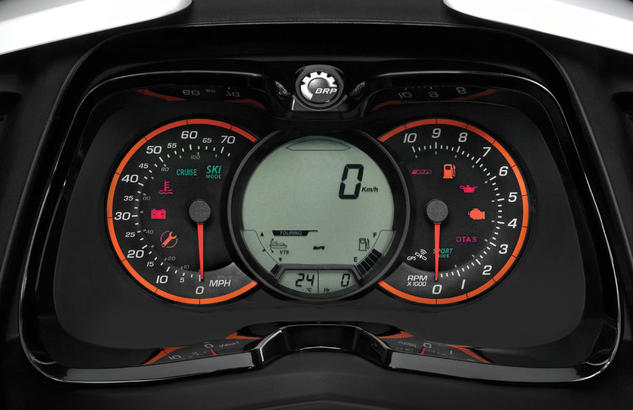
…Plus Hull…
Like the engine, the stepped “S3” hull is by now well known in personal watercraft circles. It started life as the basis for Sea-Doo’s original suspension models, but a year later the company also wisely removed the suspension, slapped the deck back atop the hull old-school style, and produced a couple models that truly showcased the hull’s potential at a more reasonable price point.
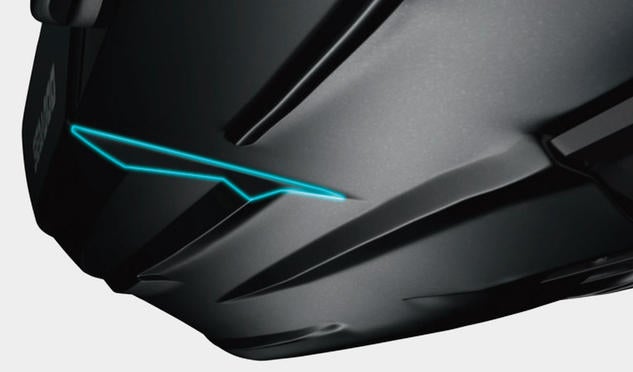 The large S3 hull excels at handling rough water or carving a sharp corner.
The large S3 hull excels at handling rough water or carving a sharp corner.
For starters, it’s big, over 139” in length. That length alone helps rough water performance, but so does the deep-V, which allows the RXP to bust through chop with the best of them. The hull feels a little loose at times, especially compared to competitors that hold an almost perfect straight-ahead line, but the flip side is that the RXT also delivers a softer ride than those same competitors. Still, differences are subtle, and truly take a back-to-back test ride to distinguish.
COMPARISON: Read our review of the 2014 Kawasaki Jet Ski Ultra 310R
The RXT name has a rich history of aggressive handling. When Sea-Doo first made the switch to the S3 hull, some industry observers wondered if it would be able to live up to the name. They needn’t have worried. Push the RXT 260 into a corner and that hull reveals a surprisingly spry side. It’s quick, agile, and makes the best of an intuitive inside lean to let drivers carve up the water with aggression.
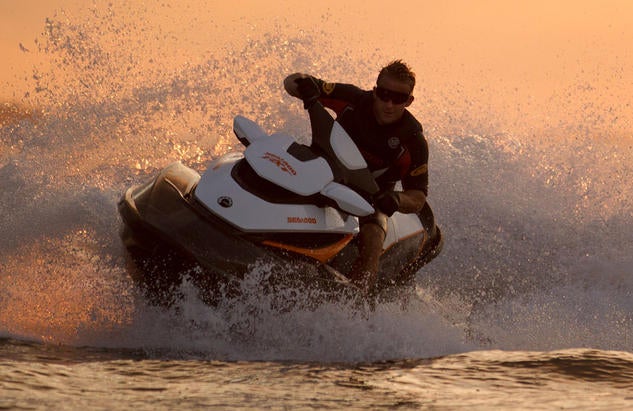
Two features make that hull even better. First are the sponsons, which help anchor that stern and keep it from slipping loose as you push the limits. Second is nozzle trim, which lets the driver drop the bow before entering that turn to allow the hull to get a better bite on the water, and then raise it upon exit to coax the most top speed out of the hull on the straightaway. It’s electric, meaning it’s quick and can easily overcome the force of water exiting the pump nozzle, but it also features a clever “double-tap” feature that allows the operator to set two favored positions, and then quickly reach them with a no-look, double-tap of the button. Like Sea-Doo’s Intelligent Brake and Reverse, it keeps the driver’s eyes focused on the water instead of looking down at the controls.
COMPARISON: Read our review of the 2013 Sea-Doo RXT-X aS 260
And yes, like nearly every Sea-Doo now made, the RXP 260 features iBR. That means it starts in a stationary position, can be “shifted” into either forward or reverse for unparalleled maneuverability around crowded or tight waters, and in an emergency, can rapidly slow to shorten stopping distance.
…Equals One Satisfying Ride
More subtle features enhance the experience even further. Cruise control and a no-wake setting are almost expected at this level, and Sea-Doo doesn’t let you down. Both are push-button simple, and take away the fatigue or jerkiness inherent to a trigger throttle. Buyers also get dual safety lanyards, both of which are digitally encoded to prevent theft and one of which acts as a speed governor. Other highlights include tilt steering and a hinged seat that raises on a pneumatic strut. Why do I like the latter? Because it eliminates having to look for a safe, snag-free spot to set the seat when inspecting the engine compartment or doing maintenance.
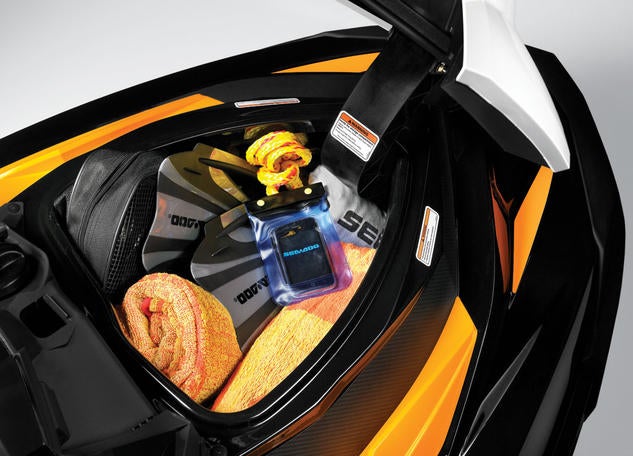 Limited storage capacity is our biggest complaint with the RXT 260.
Limited storage capacity is our biggest complaint with the RXT 260.
The craft’s biggest drawback remains storage space. Its 13.7-gallon capacity is far below the competition. Whether or not that impacts you depends on how you ride and what you need to bring along, but it’s worth considering.
Beyond that, however, the RXT 260 is an attractive buy. Just do the math.
| 2013 Sea-Doo RXT 260 Specs | |
| Length | 139.2 inches |
| Beam | 48.2 inches |
| Dry Weight | 824 lbs |
| Engine | Three-cylinder EFI, Supercharged/Intercooled |
| Displacement | 1,494 cc |
| Bore and Stroke | 100 mm x 63.4 mm |
| Compression Ratio | 8.4:1 |
| Rated Horsepower | NA |
| Fuel Capacity | 15.9 gal. |
| Combined Stowage Capacity | 13.7 gal. |
| Colors | Orange Burst |
| Price | $13,799 |
Get PersonalWatercraft.com in your Inbox!
Like PersonalWatercraft.com on Facebook
Comments
Most Popular

Remembering the Sea-Doo XP

2025 Yamaha JetBlaster PRO 2-Up Review

2024 Kawasaki Jet Ski STX 160X Review

2024 Yamaha GP HO Review

2017 Kawasaki Jet Ski Ultra 310LX Review











 Your Privacy Choices
Your Privacy Choices